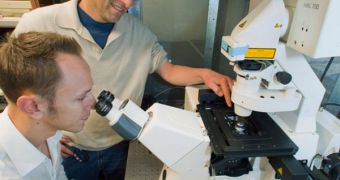In a new study conducted on antidepressants and their effect on the human body, researchers from the United States were able to identify a new mechanism through which chemicals in drugs might be acting on the human brain, moods and so on.
In order to conduct the research, scientists used a simple cell-based fluorescent assay that they themselves invented. This unique approach allowed them to look at the way the chemical fluoxetine acts once inside the human body.
This particular substance is the active ingredient in Prozac, say researchers with the US Department of Energy (DOE) Lawrence Berkeley National Laboratory (Berkeley Lab) and the University of California in Berkeley (UCB), who led this investigation.
Primarily, it acts on the TREK1 potassium channel, a neural pathway whose activity plays a significant role in mood regulation. This has made it a target for a large number of antidepressant medications.
“Whereas the inhibiting of serotonin re-uptake remains fluoxetine’s primary antidepression mechanism, many pharmacological agents have more than one target,” explains neurobiophysicist Ehud Isacoff.
“Our study shows that the inhibition of TREK1 by fluoxetine, which was found in earlier studies, is accompanied by an unbinding of the protein’s C-terminal domain from the membrane,” he adds.
“This is the first observation of the mechanism by which TREK1 might be regulated by antidepressant drugs,” adds the expert, who holds joint appointments at the Berkeley Lab Physical Biosciences Division and the UCB Department of Molecular and Cell Biology.
He is also the corresponding author of a new paper detailing the findings, entitled “Optical probing of a dynamic membrane interaction that regulates the TREK1 channel.” The work appears in the latest issue of the esteemed journal Proceedings of the National Academy of Science (PNAS).
“Studying what the different protein parts of an ion channel do is a huge challenge. Over the years, my group has developed techniques by which the domains of channel proteins can be labeled with site-specific fluorescent dyes,” the investigator explains.
“Structural rearrangements of the labeled sites in the channel can then be detected through changes in the fluorescence,” he explains of how the Berkeley Lab/UCB fluorescent assay functions.
“We found that fluoxetine causes the isolated C-terminal domain to unbind from the membrane and also causes an inhibition of current from the full TREK1 channel,” the investigator goes on to say.
Future researches will look at how the C-terminal domain can be used as an additional target for drug delivery. If a way to use it can be developed, then we could expect to see more efficient drugs on the market in the next few years.
The new investigation was supported by grant money provided by the US National Institutes of Health (NIH).

 14 DAY TRIAL //
14 DAY TRIAL //